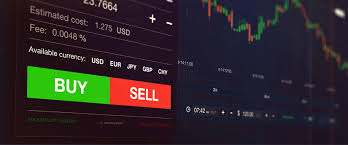
Understanding the Professional Guidelines for Forex Trading Framework
In the ever-evolving world of Forex trading, having a coherent and professional framework can mean the difference between success and failure. Many traders delve into this market without the right knowledge or guidance, often leading to unnecessary losses. In this article, we will explore effective strategies and the professional guidelines that can help traders build a solid Forex trading framework. By understanding these principles, traders can enhance their skills, manage risks wisely, and ultimately achieve their financial goals. For more insights, consider visiting forex trading framework professional guidelines forex-level.com.
1. Setting Clear Objectives
The first step in creating a Forex trading framework is to set clear, attainable objectives. Define what you aim to achieve in your trading journey. Whether it’s earning a particular percentage return on investment, achieving a specific monthly profit, or mastering certain trading strategies, having targets will help keep you focused and motivated.
2. Understanding Forex Market Mechanics
A strong foundation in understanding the Forex market is crucial. This includes comprehension of currency pairs, market hours, pips, leverage, and spreads. Educate yourself about how economic indicators, geopolitical events, and market sentiment influence currency prices. Engage in continued learning about macroeconomic fundamentals and technical analysis.
3. Developing a Trading Plan

A well-structured trading plan is an essential component of any professional Forex trading framework. It should outline your trading goals, strategies, risk management rules, and criteria for entering and exiting trades. Revisit and revise this plan regularly to incorporate new learnings and experiences. A trading plan helps in maintaining discipline, preventing emotional trading, and ensuring consistency.
4. Risk Management Strategies
Effective risk management is non-negotiable in Forex trading. Determine how much of your trading capital you are willing to risk on each trade, often recommended as no more than 1-2% of your total equity. Use stop-loss orders to protect yourself from significant losses and consider implementing risk/reward ratios to assess the potential return of your trades.
5. Technical and Fundamental Analysis
Both technical and fundamental analysis are invaluable tools for Forex traders. Technical analysis involves using historical price data and charts to identify patterns and trends, while fundamental analysis focuses on economic indicators and news events. Balancing both approaches can provide a deeper insight into market movements and improve decision-making.
6. Trading Psychology
Your mindset plays a critical role in your trading success. Understanding and managing your emotions, such as fear and greed, is crucial. Developing emotional resilience and sticking to your trading plan can help you navigate the psychological challenges that come with trading. Journaling your trades and emotions can also help identify patterns in your behavior, allowing for improvement.

7. Continuous Education and Adaptation
The Forex market is dynamic and ever-changing. To remain successful, traders must continue learning and adapting to market conditions. Engage in webinars, online courses, and read books by experienced traders. Stay updated with the latest market news and technological advancements that may impact trading strategies.
8. Utilizing Trading Tools and Resources
Leverage various tools and platforms available for Forex trading. Trading platforms often offer advanced charting tools, algorithmic trading capabilities, and access to market news. Find a broker that suits your trading style, and utilize resources that can help you analyze market situations effectively.
9. Building a Support Network
Connecting with other traders can provide valuable insights and support. Participate in forums, social media groups, or local trading communities. Exchange ideas, share experiences, and seek advice when needed. A supportive network can encourage you during difficult times and help in developing new strategies.
10. Testing and Refining Strategies
Before implementing a strategy with real capital, consider backtesting it on historical data or using a demo trading account. This allows you to gauge its effectiveness without risking real money. Always refine your strategies based on performance and market changes.
Conclusion
Establishing a professional Forex trading framework requires commitment, discipline, and a willingness to learn. By setting clear objectives, developing a robust trading plan, effectively managing risks, and building a supportive network, traders can enhance their chances of success in the Forex market. Remember that trading is a journey, and continuous growth and adaptation are essential to thriving in this exciting financial landscape.





